The Hisense U8NAU 4K mini-LED TV offers a superior TV and Dolby Atmos movie experience without necessarily the higher price tag.
It is currently Hisense’s best mini-LED, although a 2023 version of the X-series mini-LED UXKAU is still being sold. The Hisense U8NAU has superior specs.
We have just finished the Hisense U7NAU 4K mini-led TV – value without compromise, and it does a great job for the price. However, for not much more, the Hisense U8NAU is a spectacular performer.
Hisense 2024 Mini-LED



| U6NAU | Hisense U7NAU | Hisense U8NAU (this review) | |
| Website | Page | Page | Page |
| Size/Price | 55/65/75/85” $1299/1699/2499/3499 | 55/65/75/85” $1599/2299/2999/3999 | 65/75/85” $2699/3699/4999 |
| Mini-LED | Mini-LED | Mini-LED Pro | Mini-LED Pro+ |
| Processor | MT9603 | Hi-View Engine Pro with AI-SR MT9618 | Hi-View Engine Pro with AI-SR MT9618 |
| Brightness nits | 400 | 500 | 700 |
| Peak HDM nits | 600 | 1500 | 2800 |
| Contrast | 5000:1 | 5000:1 | 9500:1 |
| ms | 8 | 3.6 | 3.5 |
| Dimming zones | 240 | 384 | 9500:1 (75” is 1600:1) |
| Reflectivity | Low | Semi-gloss | Anti-glare Matte |
| Panel Hz | 50/60 | 100/120 | 100/120 |
| Speakers | 20W 2.0 – 2 x 10W DA | 40W 2.1 – 2 X 10W 20W subwoofer DA/DTS | 60W 2.1.2 – 2 x 15W 2 x 5W 20W subwoofer DA/DTS |
| Wi-Fi/Ethernet BT | AC 2.4/5Ghz/Yes 5.3 | AC 2.4/5GHz/Yes 5.2 | AX 2.4/5GHz/Yes 5.3 |
| HDMI | 3 x HDMI 2.0b ARC | 2 x HDMI 2.0b 2 x HDMI 2.1 eARC | 2 x HDMI 2.0b 2 x HDMI 2.1 eARC |
| Weight with stand | 19.5 | 20.8 | 31 |
Spoiler Alert: While the U8N is obviously brighter, the U7N does a sterling job for typical TV SDR free-to-air and HDR streaming. But when you look at RRP, the 65U7 is $2299 versus the 65U8 at $2699. Harvey Norman has the U7/U8 at $1995/$2295 – a no-brainer upsell.
Note: All specs are for the 65” 65U8NAU model. The letter N is for the 2024 model, and AU is for Australia. You must disregard any international reviews as these are invariably based on different panels, operating systems, and electronics used in UK, European, Chinese, and US models (Google TV).
It is hard to compare the 75” U8NAU and the 65” U8NAU
We had the 75” model with a different ADS Pro (BOE-made) panel than the 65” and 85” VA panels. We cannot compare apples with apples with these or the 65” U7NAU review (it also uses an ADS panel for its 75”).
Compared to the 65” Hisense U8NAU using a VA panel, IPS-ADS panels have a wider field of view (145+° versus 130°), 2000 dimming zones (1600), and use less power. Where possible, we have included specs for the 65” but the images are for the 75”.
However, after further research about the panels, we conclude that VA is better suited to this TV. VA has a higher contrast (blacks are still deep grey), is brighter (nits and sustained nits vary), and has a faster response time.
So, while the 75” Hisense U8NAU had a pleasant viewing experience, readers should insist on seeing the 65, 75 and 85” side-by-side before deciding.
Australian review: Hisense U8NAU 2024 Mini-LED TV
| Website | 2024 TV range Product page There is no Australian download manual. US manual here but using Google TV. |
| Price RRP | 65/75/85” $2699/3699/4999 |
| From | Harvey Norman, JB Hi-Fi, Good Guys, Bing Lee, Appliance Central, Retravision, Videopro |
| Warranty | 3-years ACL |
| Made in | China |
| Company | Hisense (founded in 1969) is a Chinese-owned, multi-national white goods and electronics manufacturer headquartered in Qingdao, Shandong Province, China. It owns appliance brands, including Gorenje, Hitachi, Sharp, Toshiba, and some local China-only brands. |
| More | CyberShack Hisense news and reviews |
New ratings in 2024
We use Fail (below expectations), Pass (meets expectations) and Exceed (surpasses expectations or is the class leader) against many of the items below. We occasionally give a Pass(able) rating that is not as good as it should be and a Pass ‘+’ rating to show it is good but does not quite make it to Exceed. You can click on most images for an enlargement.
We are also tightening up on grading. From now on, Pass, for example, means meeting expectations for the price bracket. We consider a Pass mark to be 70+/100 with extra points added for class-leading and excellence.
First Impression – Pass
I have reviewed most Hisense models over the past few years. Each iteration keeps improving, so Hisense is well past the cheap Chinese challenger brand.
The Hisense U8NAU is well-finished and well-made and should last the distance expected of brand-name TVs—at least ten years. That, however, is entirely dependent on TV Operating system updates and security patches.
Hisense has only committed to upgrading this to VIDAA 8, significantly less than LG, Samsung, Sony, and TCL’s four OS or more upgrade policies.
It is an attractive package with aluminium bezels, a height-adjustable centre pedestal stand, a plastic back panel, and 2.1.2 sound with an imposing sub-woofer at the rear. At the bottom bezel is a power button/indicator, microphone, and mic on/off switch (for use with Hey VIDAA or Alexa).
The power socket is on the right, and the AV sockets are on the left. It is 1449 x 907 x 290mm x 31kg with a stand (73mm thick, 600 x 400 VESA wall mountable) and should not need wall reinforcement at 25.5kg without the stand. There is no cable management system to allow for flush wall mount.
Remote – separate battery and solar – Pass
The standard battery remote has backlit buttons, 12 streaming presets (of which four are useful), numeric keys that allow you to change free-to-air (FTA) TV channels by number instead of wading through a long electronic program guide, a dedicated EPG guide and Channel List buttons. As IR, it is directional, needing to be within 3m and pointing at the TV (if your soundbar does not obscure the IR sensor). You can pair it with BT to extend the range and overcome soundbar obstruction.
It is relatively intuitive to use—home, back, input, settings, info, subtitle, mute, and microphone.
The solar remote (also USB-C rechargeable) has six presets, numeric buttons, a guide, and information. It is also IR and somewhat directional, but you can pair it with BT.

VIDAA 7 – Pass
The biggest differentiator is that Hisense runs VIDAA OS versus Samsung (Tizen OS), LG (webOS) and TCL (Google TV). In 2019, VIDAA was hived off as a separate company to pursue an alternative TV OS. Its headquarters are in the USA, and its staff is in China, Israel, Poland, Germany, Slovenia, and the Netherlands.
VIDAA has two parts. The first is the TV firmware based on Linux. It handles setup and makes the TV work. It runs on Hisense (except in the USA, which uses Google TV) and Toshiba (owned by Hisense).
The second part is the content. The easiest way to describe VIDAA is that it is ‘app-less’, although, for simplicity, it calls them apps. Where other OSs require dedicated apps to be downloaded and installed from Netflix, Prime, etc., VIDAA accesses these via an HTML5 cloud browser. You can access the app-less library based on local copyright and licensing terms.
Because every bit of digital content comes via VIDAA, it offers universal search, content recommendations, free local and global advertising-supported TV (FAST), and central billing. Like all TV OS, VIDAA knows what you watch.
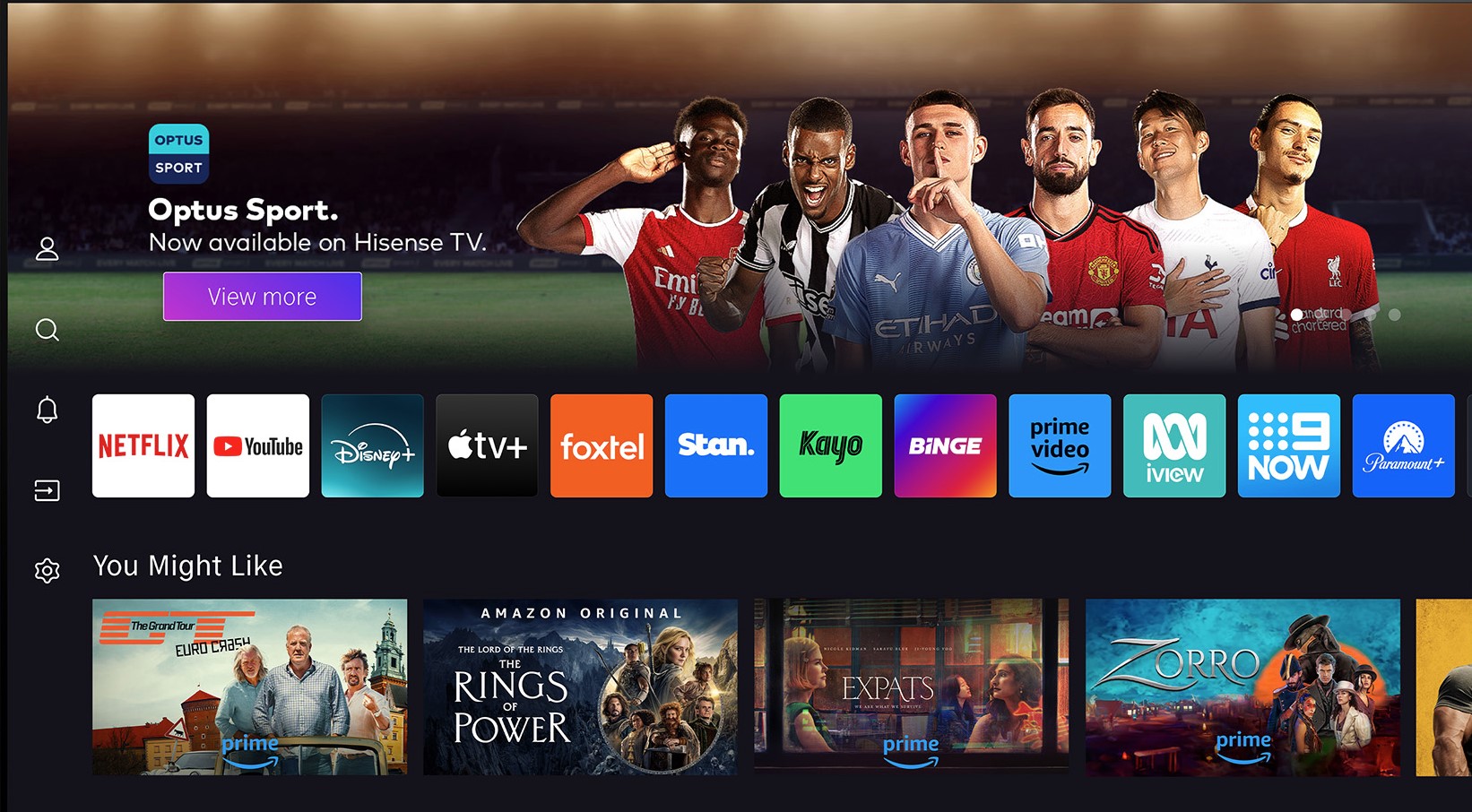
VIDAA 7 setup
It offers various ways to set it up, including signing in with Google or Facebook (Do not use if you value privacy) or, as we prefer – using a junk email account (easy to set up in Gmail, etc.).
You must create a Hisense account to use most smart TV features or VIDAA TV services.
The Home screen uses large icons, and scrolling down the rows offers recommendations, including Netflix, Prime Video, Disney+, etc. You can add from the VIDAA App Store but cannot delete pre-installed (paid-for) apps.
The VIDAA mobile application is available for Android and iOS (not tested).
Upside:
- Fast and easy to use
- It can be used as a semi-smart TV without a Hisense account (FTA and digital streaming)
- Offers Automatic content recognition and switching settings to suit.
Downside:
- It needs an internet connection for all smart TV functions (pretty well the same as any TV OS),
- Fewer ‘apps’ (buy a Google TV dongle if you need it).
Privacy – Pass
All smart TVs cover up what you view, information from profiles and cross-platform sharing with Google, Facebook, and others. So, Hisense knows about you and monetises that data (as do Samsung, LG, Sony, TCL, et al.).
You can turn off some advertising settings but still get recommendations (mainly adverts from Netflix, Prime, etc.).
As with almost all brands, we cannot cut and paste the privacy policy and terms of use for your education.
Hisense U8NAU ports – Pass
Note: Australian power frequency is 50Hz, so that is shown before the US 60Hz ratings
- HDMI 1, 2.0 (18Gbps) 4K@50/60Hz
- HDMI 2, 2.0 (18Gbps) 4K@50/60Hz
- HDMI 3, 2.1 (48Gbps) 4K@100/120/144Hz, ALLM, VRR, HFR and eARC/ARC switchable (use for a soundbar)
- HDMI 4, 2.1 (48Gbps) 4K@100/120/144Kz, 4:4:4, ALLM, VRR, HFR, FreeSync Premium
- USB-A 3.0 5V/1A/5W for external SSD drives (exFat to 2TB tested) and perhaps digital cameras
- USB-A 2 5V/.5A/2.5W (for flash drives)
- Digital Audio out (Toslink)
- 3.5mm 3-pole AUX in (RCA stereo connector)
- Lan 10/100Mbps
- 3.5mm 3-pole (no mic) headphone
- TV antenna
- Wi-Fi 6 AX
- Bluetooth 5.0 SBC codec supports keyboard, mouse and gamepad and one BT stereo headphone or speaker.
If you are going to stream digital content, you need to use Wi-Fi 5Ghz. It requires a relatively strong signal strength router within 10m and at least 50/20Mbps NBN; otherwise, you could experience buffering, image breakup, and possibly lost signal. Full-duplex Ethernet is the best connection for this.
As it does not support Chromecast, you will need a Google TV dongle for Android screen mirror. It supports Apple AirPlay 2 (not tested). MiraCast for Windows PCs over Wi-Fi is at 1280 x 720 x 30fps, which is disappointing as most TVs now use 1920 x 1080 x 30fps.
PVR – Not Tested
It can record FTA and digital TV channels to USB (or SSD), not digital streaming channels. It uses the EPG to select +/-24 hours or set a scheduled recording. Recording is 1080p (or a lower native signal resolution).
Power use – Pass
Tests (The 75” ADS-Pro panel is more energy efficient, so expect these to be similar to the 65” VA panel).
- Digital and FTA approx. 200Wh
- Dolby Vision approx. 300Wh
- Standby screen off: <.5W
- At 40 cents per Wh, 8-12 cents per hour is negligible.
Voice control – Pass
It has dual mics on the TV (switchable) and a voice remote that supports VIDAA Voice and Alexa via the remote or the TV microphone. VIDAA Voice was hit-and-miss, but most voice assistants are not perfect either.
OK Google (Google Home) and Siri (Apple Home) require a smart speaker.
Games – Pass+
The Hisense U8NAU has two HDMI 2.1 48Gbps with VRR, ALLM and HFR. 120/144Hz Game mode requires a Windows 10 or 11 PC with a suitable NVIDIA GeForce or AMD Radeon graphic card connected to HDM1 4. Xbox X or PS 5 can connect 4K@ 100/120Hz via HDMI 4 (not tested).
There is a game bar for instant feedback on gaming settings and features. 4K@60Hz input lag is <15ms and between <6ms for 4K/100/120.
This may be one of the lowest-cost TVs capable of good game performance.
Parental Control (not tested)
You can schedule blocking by time, channel, program or input port.
Accessibility (not tested)
Settings include Closed Caption, high-contrast text, text-to-speech, Talkback and more.
The mini-LED/Quantum Dot dilemma
Mini-LED replaces Edge-lit (cheap), Direct-Lit (backlit, no local dimming), and Full-Array Local Dimming (FALD) full-sized LEDs and is the brightest backlight for an LCD screen. It still uses LCD ‘gate’ technology, so it can’t quite achieve the inky blacks that OLED can, and all LCDs suffer from blooming/haloing around white objects on dark backgrounds.
Quantum Dot uses different wavelength ‘dots’ excited by the blue mini-LED backlight to produce RGB colours.
All mini-LEDs struggle to balance brightness, colour accuracy, and contrast. It can be bright, but the colours are oversaturated), and the contrast (black levels) is greyer. Alternatively, it can have natural colours and great blacks, but the brightness is too low.
The 1600/2000 zones in the 65/75” Hisense U8NAU have more successfully addressed the balance issue.
Picture Modes- 75” tested
Out of the box on Cinema (supposedly the most colour-accurate mode), Delta E was under 2 (4 is considered acceptable). We got it to around 1 with some minor tweaking, and there is potential to improve. That is excellent.
Joe and Jane Average will see a big, bright, colour-accurate screen that they can enjoy in SDR (FTA TV and digital TV streaming), HDR (digital streaming), and movies (Dolby Vision).
Videophiles will still see little crushing in dark areas, decent definition in the highlights and lowlights, minimal blooming, and few imperfections. It is a great panel.
Hisense and Calman recently announced that its premium Mini-LED Android TV (USA) and VIDAA 7 (Europe) will support Portrait Displays’ latest Calman 5.15.4 release. All professional license levels support Calman’s autonomous SDR and HDR playback calibration methodology. A consumer license level is planned for deployment soon.
Modes
- Vivid (Dynamic): Maximum colour saturation affects Delta E accuracy. Best for very bright rooms.
- Standard: Colour and brightness for typical SDR News, Drama or Documentaries.
- Energy Saving: It can save energy and provide an acceptable image for darker rooms.
- Game: Optimises the TV’s settings on a PC or a game console connected to the TV.
- Sports: Optimises colours where there are large single-colour areas (like a playing field)
- Enhanced ARC: Adjusts for content automatically using viewer data – privacy implications.
- Filmmaker: As the maker intended – not very bright.
- Cinema: Closer to DCI-P3 movies standard
When set to automatic, it selects the correct setting for HDR to Dolby Vision. Overall, these work, but you may need to adjust the brightness.
There is an automatic light sensor to adjust brightness to ambient light.
Summary: Once set up, scroll through the presets to see what suits you. It is best to do this when you usually watch TV because the preset you like during the day may be too bright at night. We recommend Standard (or even Energy Saving with a few tweaks) for most viewing.
You may not be able to see the differences between the settings below as you will likely view this on an 8-bit phone screen or desktop monitor. Look for details in the hair, green eye shadow, red lips and jewels. Also, look at the black background for subtle tone differences.






How does it look – tests
We tested with HDR, HDR10, HDR10+ Adaptive, Imax Enhanced, and Dolby Vision IQ content. All HDR content is automatically identified, and you can choose new presets.
Subjectively and assuming a bright Aussie lounge room
- SDR (FTA and digital TV) on Standard or Energy efficiency modes exceeds expectations for daylight viewing.
- HDR/HDR10 (digital streaming) in Cinema or Filmmaker modes exceeds expectations.
- HDR10+ Adaptive uses the ambient light sensor and, in Filmmaker mode, meets average expectations, albeit not bright enough. It is way too tempting to amp up the brightness at the expense of colour accuracy (our eyes crave saturated colours). We had problems finding much commercial HDR10+ content
- Dolby Vision IQ uses the ambient light sensor and meets expectations. Like HDR10+, it is tempting to select more colourful presets.
- Imax Enhanced is a remastering of HDR10+ and Dolby Vision content but uses DTS:X sound and appears only to be supported by Disney+. It has not been tested, but we suspect this TV’s brightness and dimming zones suit Dolby Vision and Atmos more.
- ADS has a wider viewing angle 145+° (65/85” use a VA panel closer to 120°)
Colour – Pass+
It uses an 8-bit + 2 FRC (frame rate control) to produce 1.07 billion colours – all mini-LEDs use FRC. READ 8-bit versus 10-bit screen colours. What is the big deal?
DCI-P3 tests are 99% of the gamut, and Delta E is <2 (could get this to <1 with calibration). The main areas to tweak are colour temperature and brightness.


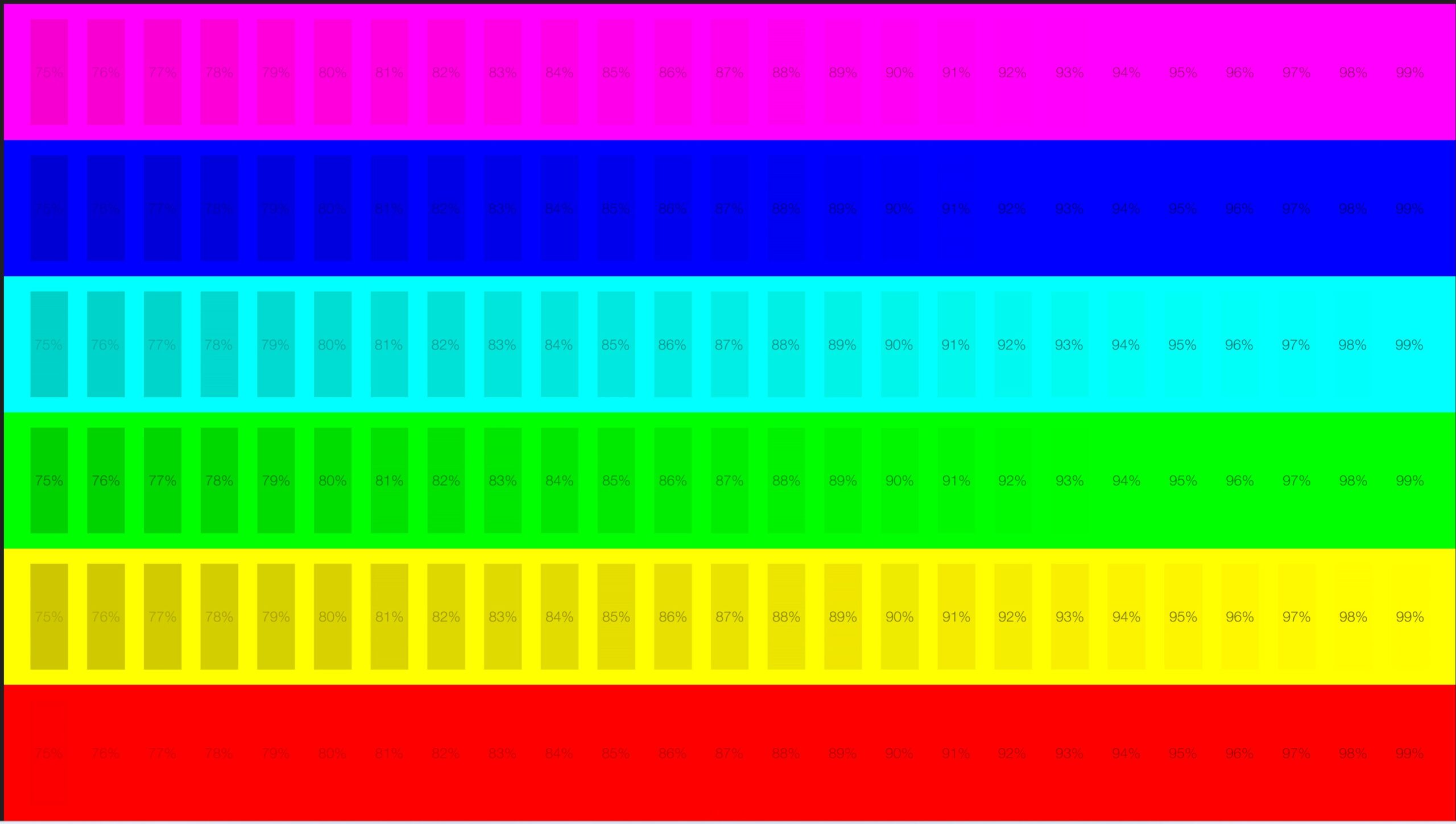
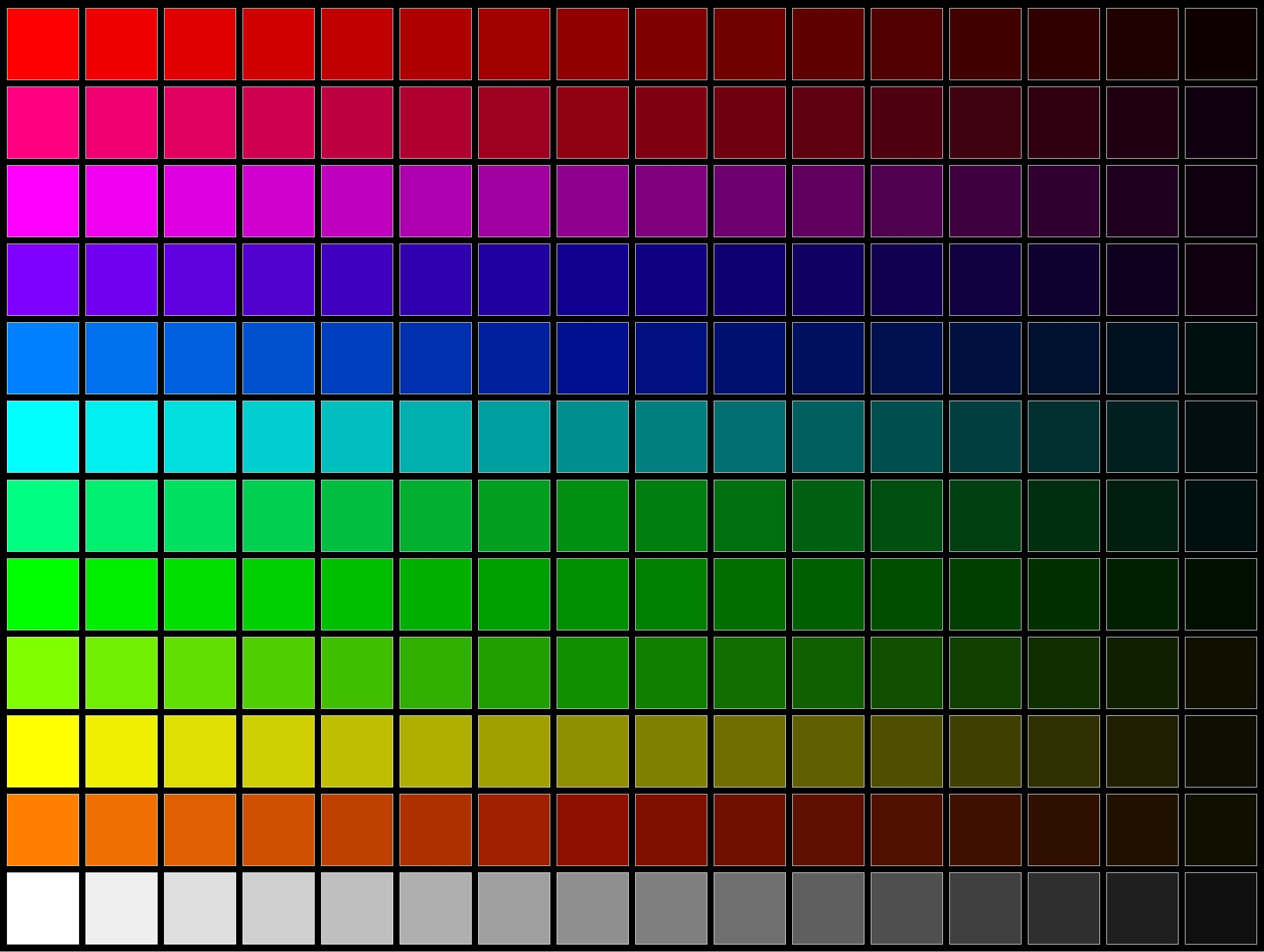

Dolby Vision/HDR10+/HDR10/HDR/IMAX Enhanced – Pass+
We extensively test with HDR content up to Dolby Vision.
The TV handles HDR/HDR10 (metadata sets the calibration for the entire movie) very well – Exceed.
It has a better-than-average mini-LED representation for Dolby Vision and HDR10+ (frame-by-frame calibration). We did not see black crushing or loss of HDR detail in highlights or lowlights.
We feel Dolby Vision IQ is a tad too aggressive. However, leave it on as it adjusts the gamma and tone mapping to match the room conditions.
Brightness 75” (nits) – Pass+
HDR content reaches more than the minimum peak brightness.
- 2/10% window 2000/2800
- 100% sustained 900
SDR exceeds minimum peak brightness (any TVs are <400 nits).
- 2/100% 2000/2800
- 100% sustained 875
This is a very bright TV; most presets only use 50% of the available brightness.


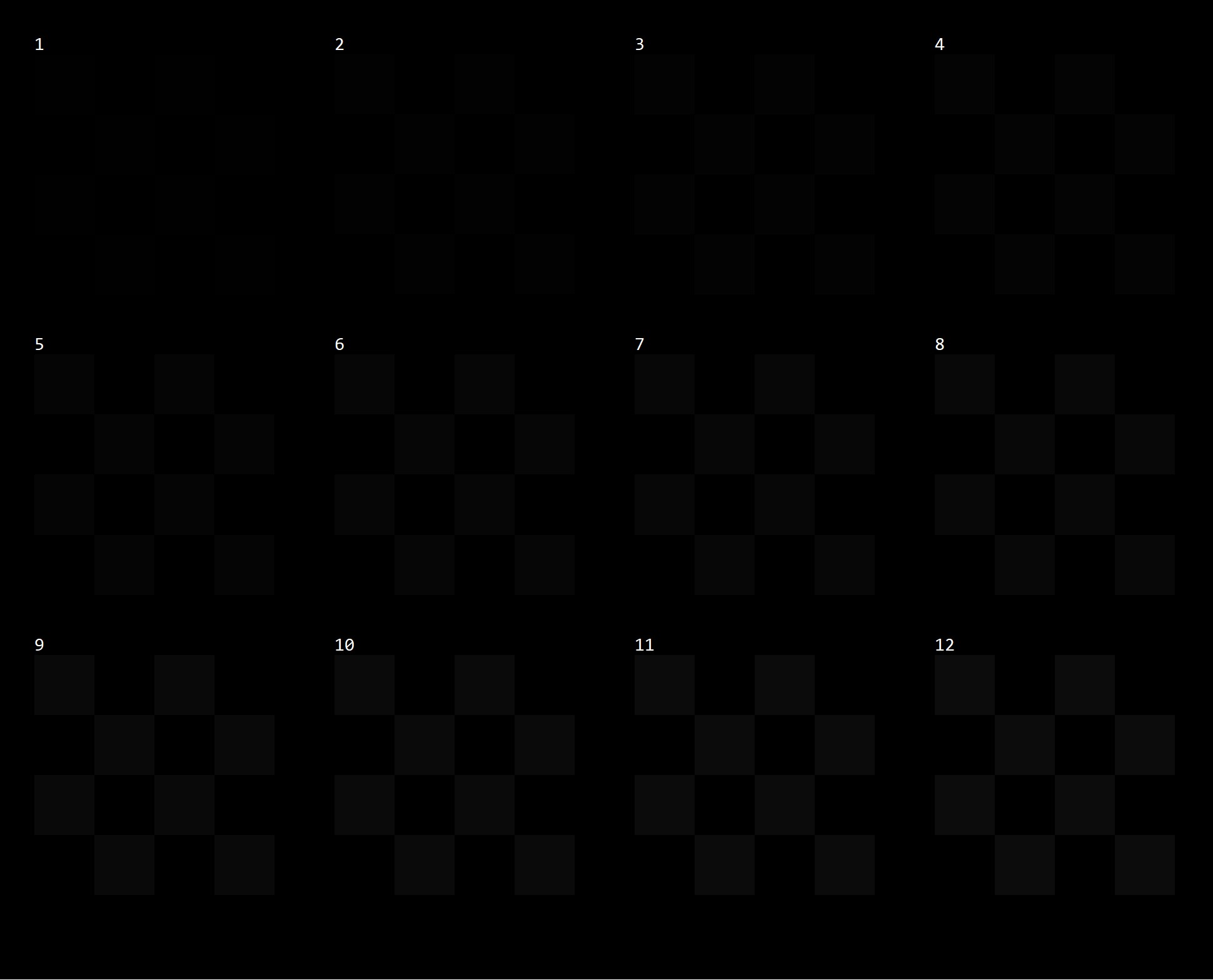
Contrast – Pass
Contrast is the difference between the panel’s blackest black and the whitest white. This claims 5000:1 (test 4700:1), which is static contrast – a popular marketing term.
The ADS panel claims 1600:1 (test 1350:1), and blacks are an intense grey. However, the anti-reflective panel coating appears to darken the blacks, so this is acceptable.
Buyers should not be concerned that if it were a VA panel, it would be closer to 9500:1 (U7NAU is 5000:1 – VA panels have higher contrast).




Dimming Zones and Blooming–Pass+
The 65/75” 1600/2000 dimming zones minimise blooming between zones. For SDR TV, you won’t notice any. There is minor and well-controlled blooming around white lettering on a dark background.

Motion smoothing – Pass
It is a 100Hz panel (Australian electricity is 50Hz) and offers Motion Smoothing 200 (this is not a Hz rating). As far as we can tell, it is a mix of BFI and AI predictive insertion (the difference between the actual frame and the subsequent frames and recognised shapes); ergo, there is some motion tearing and a little lack of sharpness at 50Hz or more. There are some minor artefacts around fast-moving objects.

Upscale – Pass
Upscale on a 75 or 85” TV is more challenging because the pixel density (ppi) is 59 and 52, respectively – a.k.a. larger pixels.
We test with 480/7320/1080p content. In the most basic sense, it upscales to 4K (in 1080p’s case) by surrounding each real pixel with four more.
Hisense also has sufficient AI (from machine learning) to recognise specific objects and colours and use a mix of pixel wrapping and sharpening the image. It works well on 1080p.






Off-axis viewing – Pass+
This affects your seating layout. We noticed significant colour drop-off past about 145° off angle (90° means sitting straight on).
Unlike the VA screen on the 65 and 85”, you can have decent off-angle viewing.
Reflection – Pass
The screen has an anti-glare, low-reflectance coating that does a better job than the U7NAU. However, it is still important to control light sources from behind and over the seating area.

Dirty Screen Effect and Uniformity – Pass
This is about uniformity of colours, white and black. It also reflects 1600/2000 dimming zones. Each panel can be different, so you may not experience DSE.
DSE is not noticeable, and the uniformity of colours and greys is excellent – a definite improvement over the U7NAU.
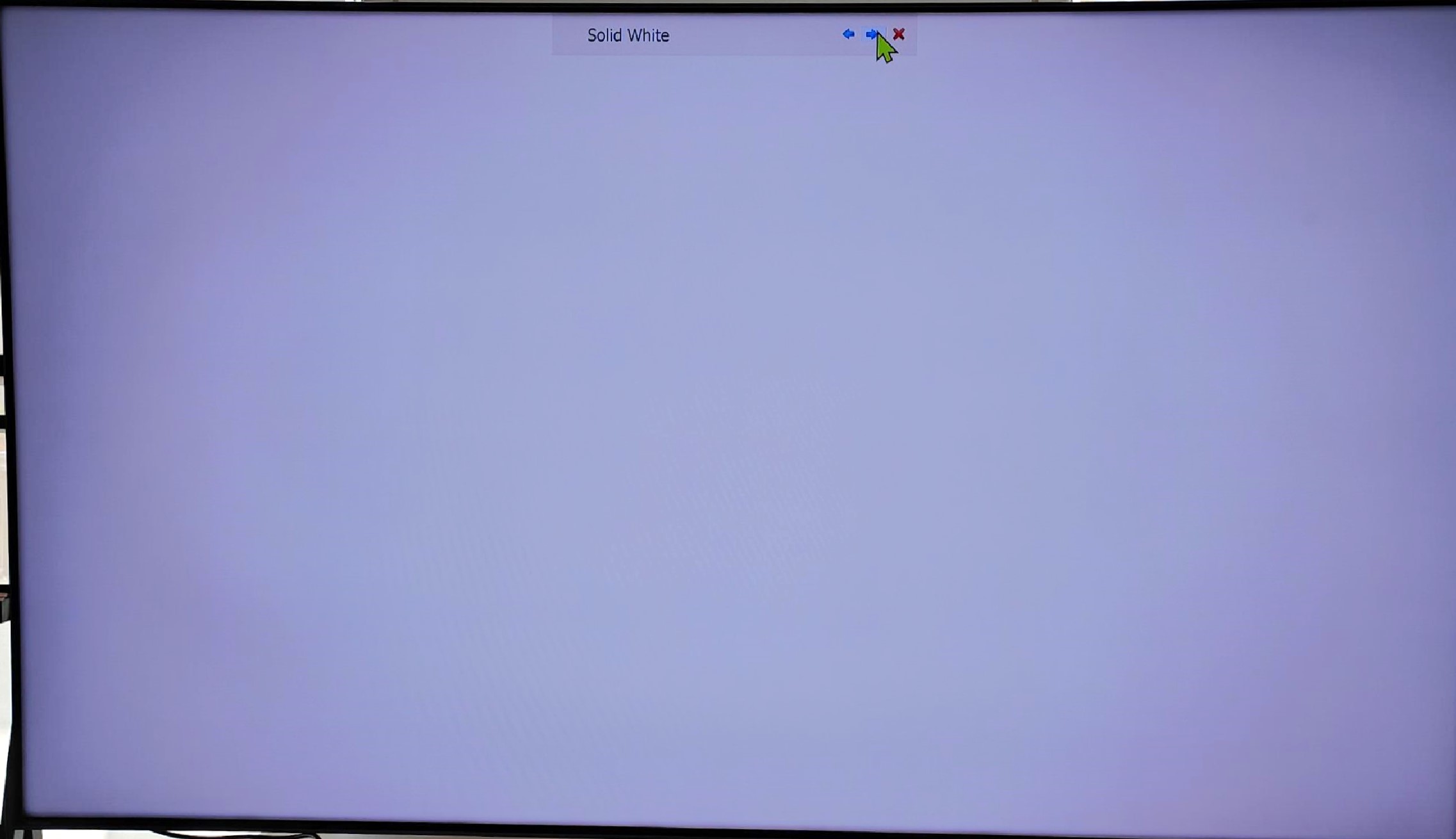
Summary: The screen is as uniform as we expected from a premium Mini-LED.
Sharpness – Pass
14-point type is crisp and readable (U7K was 24-point)

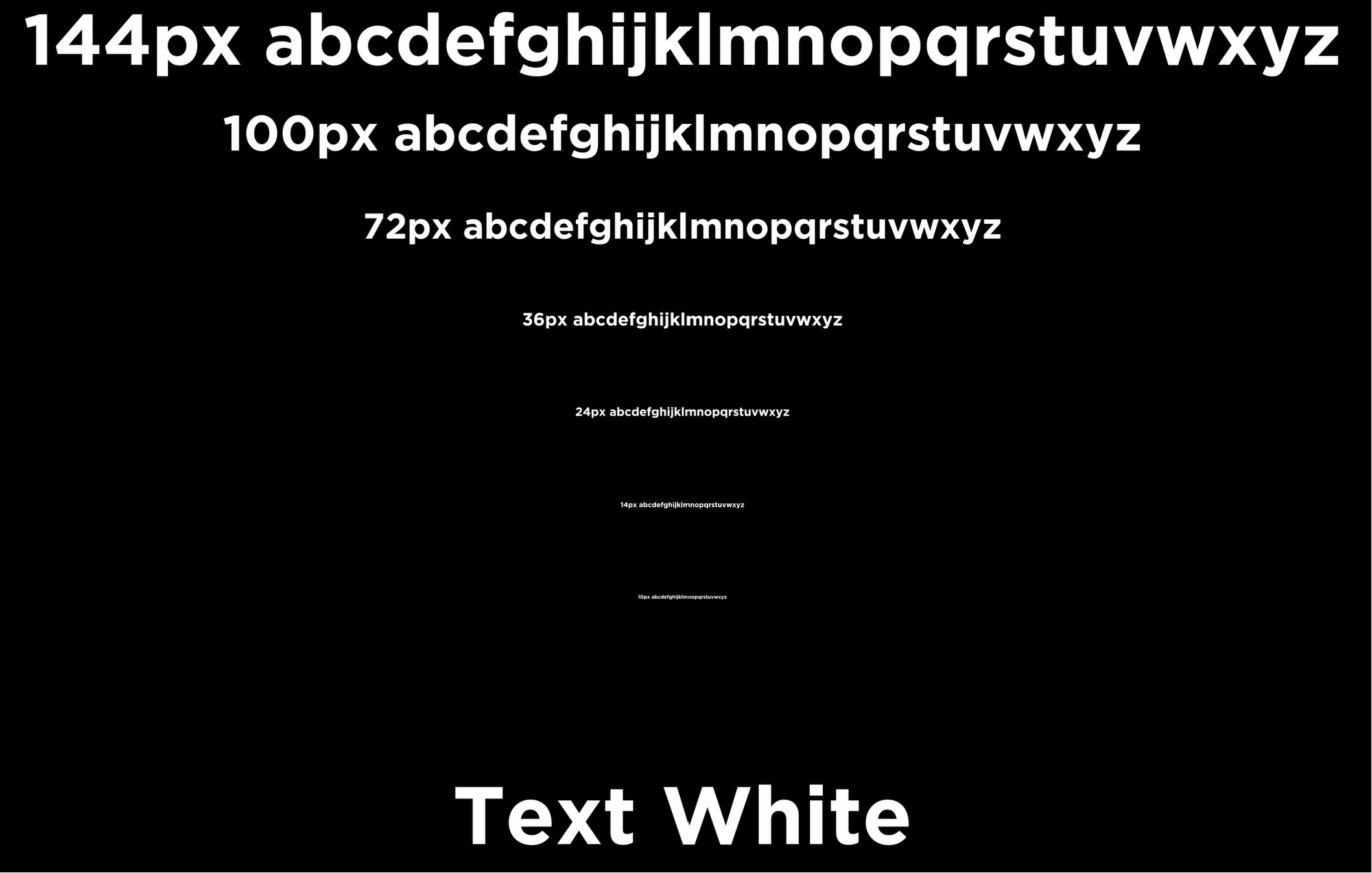
Pulse Width Modulation (PWM) – Pass+
It uses PWM, but it is very high at 7800Hz. There is no issue for PWM-sensitive people.
Sound modes – TV speakers only – Pass
The 65” has a 2.1.2 speaker setup: 2 x 10W Left/Right down-firing speakers, 2 x 5W Left/Right up-firing speakers and a 20W rear-firing subwoofer.
Presets include
- Standard: Fairly flat neutral frequency
- Enhanced ARC: Automatically adjusts content – privacy implications
- Theatre: Tried to add more surround sound but failed with 2.1 speakers.
- Music: recesses mid to make bass and treble sound more prominent.
- Speech: Recesses bass and treble to make 1-4kHz mid more prominent.
- Late Night: Focus on clear voice only – no bass or treble
- Sport: Attempts to reduce crowd noise and focus on commentary.
These are all overridden by a soundbar and its presets.
To be polite, the TV sound is fine for SDR FTA TV and digital TV streaming, but it cannot be classed as a Dolby Atmos experience. With DA content, it has some minor front-centric 3D height but no surround. The subwoofer is rear-firing, and that would affect its effectiveness when wall-mounted.

Mid-bass starts at 50Hz and linearly builds to 200Hz. It then stays flat to 6kHz, dips to avoid some treble harshness and linearly declines to 20kHz.
This is not great TV sound. There is almost no mid-high bass (or room-shaking low bass), flat mid (clear voice is from 1-4kHz), and recessed treble that takes a lot of vitality out of the music.
The soundstage is stereo, as wide as the TV, and very front-centric. DA content has no additional soundstage or height but slightly improves the sound quality.
We noticed a slight speaker vibration in low bass from 50-80Hz at full volume (83dB).
Joe and Jane Average will never push the volume to this (it is more like 50% and 60dB), so they won’t notice.
Read – How to tell if you have good music (sound signature is the key.
CyberShack’s view – The Hisense U8NAU is a stellar SDR and well above-average HDR TV.
It is nice to have both the 65” U7NAU and 75” U8NAU simultaneously for review. I reviewed the U7NAU first, and overall, it is a good viewing experience, adding more value and features than expected for the price. It is way ahead of the generic Chinese brands – way ahead!
The two have similar functionally—they have the same processor, ports, and operating system, with the main difference being the number of dimming zones and peak brightness.
It is unfair to compare the 75” U8NAU with its ADS panel to the 65” U7NAU with a VA panel. It has a superior image, but that is not an apples-with-apples comparison.
I enjoyed looking at SDR and HDR content. While mini-LED will never match OLED for pure black and white (which videophiles demand), this is an acceptable compromise, especially for use in bright areas.
TV sound is not a strong point for any brand, and Hisense is no exception. We also tested with Hisense soundbars; frankly, adding even a low-cost 3.1 soundbar materially improves the viewing experience. If you want Dolby Atmos or DTS:X sound, then a decent soundbar is a must.
CyberShack can confidently give the U8NAU a buy recommendation.
Summary: If you are looking for a bargain, the U7NAU offers a pleasant viewing experience. If you have a little more cash, the Hisense U8NAU will enhance that and be better in bright rooms.
Competition
- The TCL C855 – the best value, high-performance, QD mini-LED got even better is the closest competitor with Google TV OS and a more generous update policy. On paper, the feature/value equation is hard to beat.
- Sony’s Bravia 9 (2800/1512 dimming zones) will outperform the Hisense U8NAU but at almost twice the price.
- Sony Bravia 7 (2000 nits/480 dimming zones) versus Hisense U8NAU (2800 nits/1600 dimming zones)—We have not reviewed Sony yet but saw it at the launch, and Hisense looks better.
- Samsung does not support Dolby Vision, so it is out.
- The LG QNED91TSA 2024 is a mini-LED TV done almost right. It is reasonably priced and has an impressive 5-year OS upgrade policy. Whether you like WebOS and want four HDMI 2.1 ports is up to you.
Hisense U8NAU ratings
Caveat: The 75” uses a different panel technology and offers a nominally different viewing experience to the 65 and 85”.
- Features: 85 – TCL has upped the specifications with higher nits and more dimming zones.
- Value: 85—Looking at the alternatives, it is well in the ballpark.
- Performance: 90 – The key advantage to this is the better out-of-the-box calibration and presets, meaning Joe and Jane Average can plug and go.
- Ease of use: 75—VIDAA 7 does everything you need in a relatively easy-to-use interface. If you need more streaming Apps, buy a Google TV dongle. While it has a three-year warranty, the single OS upgrade loses points against the competition, generally between four and seven.
- Design: 80 – A little chunky; wall mounting may impact speaker fidelity.
Pro
- More brightness than you can use, even in the great open-plan Aussie lounge room.
- Good reflection handling
- Decent upscale
- Well-controlled blooming and haloing.
Con
- The 75” ADS panel has a wider viewing angle than the 65/85” VA panel
- One OS upgrade is not competitive with other brands
- VIDAA 7 has come a long way but still lacks some features and apps in Google TV and WebOS.
CyberShack Verdict
Hisense U8NAU 4K mini-LED TV
65/75/85” $2699/3699/4999












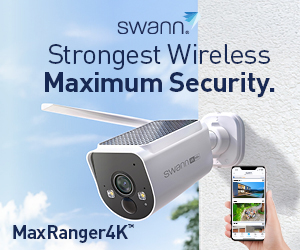

Comments